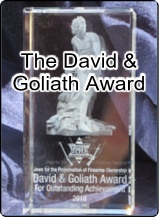

Why you carry extra ammo and
full capacity magazines ...
![]()
From Guns Save Life.com, April 21st 2013
Article source.
 A fabulous article over at Police One about a Skokie, IL police officer who engaged in a gun battle with a Gangster Disciple bank robber who was one highly motivated bad guy who took 13 hits from a .45 auto – including six fatals – before a trio of head shots finally put him out of the fight 56 seconds into it.
A fabulous article over at Police One about a Skokie, IL police officer who engaged in a gun battle with a Gangster Disciple bank robber who was one highly motivated bad guy who took 13 hits from a .45 auto – including six fatals – before a trio of head shots finally put him out of the fight 56 seconds into it.
And this was a firearms instructor who was a great shooter, not some rookie who "never fired a gun before he just finished the academy" shooter who struggles with the qualification shoot.
This is why you carry extra ammo.
Personally, I carry two spare mags always. When carrying in free states, I carry two extra mags, almost universally 17-round G17 mags even if I'm carrying my Glock 19.
It's also another reason to fight politicians who would saddle you with 10-round magazines for some arbitrary reason.
(NOTE: Be sure to have read Rabbi Bendory's excellent article, Five Reasons Why You Should Want High Capacity magazines.)
Here's the story - a great read …
By Charles Remsberg, April 17th 2013
Policeone.com report original.
Why one cop carries 145 rounds of ammo on the job.
 Before the call that changed Sergeant Timothy Gramins' life forever, he typically carried 47 rounds of handgun ammunition on his person while on duty.
Before the call that changed Sergeant Timothy Gramins' life forever, he typically carried 47 rounds of handgun ammunition on his person while on duty.
Today, he carries 145, "every day, without fail."
He detailed the gunfight that caused the difference in a gripping presentation at the annual conference of the Assn. of SWAT Personnel-Wisconsin.
At the core of his desperate firefight was a murderous attacker who simply would not go down, even though he was shot 14 times with .45-cal. ammunition — six of those hits in supposedly fatal locations.
The most threatening encounter in Gramins' nearly two-decade career with the Skokie (Ill.) PD north of Chicago came on a lazy August afternoon prior to his promotion to sergeant, on his first day back from a family vacation. He was about to take a quick break from his patrol circuit to buy a Star Wars game at a shopping center for his son's eighth birthday.
An alert flashed out that a male black driving a two-door white car had robbed a bank at gunpoint in another suburb 11 miles north and had fled in an unknown direction. Gramins was only six blocks from a major expressway that was the most logical escape route into the city.
Unknown at the time, the suspect, a 37-year-old alleged Gangster Disciple, had vowed that he would kill a police officer if he got stopped.
"I've got a horseshoe up my a$$ when it comes to catching suspects," Gramins laughs. He radioed that he was joining other officers on the busy expressway lanes to scout traffic.
 He was scarcely up to highway speed when he spotted a lone male black driver in a white Pontiac Bonneville and pulled alongside him. "He gave me 'the Look,' that oh-crap-there's-the-police look, and I knew he was the guy," Gramins said.
He was scarcely up to highway speed when he spotted a lone male black driver in a white Pontiac Bonneville and pulled alongside him. "He gave me 'the Look,' that oh-crap-there's-the-police look, and I knew he was the guy," Gramins said.
Gramins dropped behind him. Then in a sudden, last-minute move the suspect accelerated sharply and swerved across three lanes of traffic to roar up an exit ramp. "I've got one running!" Gramins radioed.
The next thing he knew, bullets were flying. "That was four years ago," Gramins said. "Yet it could be ten seconds ago."
With Gramins following close behind, siren blaring and lights flashing, the Bonneville zigzagged through traffic and around corners into a quite pocket of single-family homes a few blocks from the exit. Then a few yards from where a 10-year-old boy was skateboarding on a driveway, the suspect abruptly squealed to a stop."He bailed out and ran headlong at me with a 9 mm Smith in his hand while I was still in my car," Gramins said.
The gunman sank four rounds into the Crown Vic's hood while Gramins was drawing his .45-cal. Glock 21.
"I didn't have time to think of backing up or even ramming him," Gramins said. "I see the gun and I engage."
Gramins fired back through his windshield, sending a total of 13 rounds tearing through just three holes.
A master firearms instructor and a sniper on his department's Tactical Intervention Unit, "I was confident at least some of them were hitting him, but he wasn't even close to slowing down," Gramins said.
The gunman shot his pistol dry trying to hit Gramins with rounds through his driver-side window, but except for spraying the officer's face with glass, he narrowly missed and headed back to his car.
Gramins, also empty, escaped his squad — "a coffin," he calls it — and reloaded on his run to cover behind the passenger-side rear of the Bonneville.
 Now the robber, a lanky six-footer, was back in the fight with a .380 Bersa pistol he'd grabbed off his front seat. Rounds flew between the two as the gunman dashed toward the squad car.
Now the robber, a lanky six-footer, was back in the fight with a .380 Bersa pistol he'd grabbed off his front seat. Rounds flew between the two as the gunman dashed toward the squad car.
Again, Gamins shot dry and reloaded.
"I thought I was hitting him, but with shots going through his clothing it was hard to tell for sure. This much was certain: he kept moving and kept shooting, trying his damnedest to kill me."
In this free-for-all, the assailant had, in fact, been struck 14 times. Any one of six of these wounds — in the heart, right lung, left lung, liver, diaphragm, and right kidney — could have produced fatal consequences…"in time," Gramins emphasizes.
But time for Gramins, like the stack of bullets in his third magazine, was fast running out.
In his trunk was an AR-15; in an overhead rack inside the squad, a Remington 870.
But reaching either was impractical. Gramins did manage to get himself to a grassy spot near a tree on the curb side of his vehicle where he could prone out for a solid shooting platform.
The suspect was in the street on the other side of the car. "I could see him by looking under the chassis," Gramins recalls. "I tried a couple of ricochet rounds that didn't connect. Then I told myself, 'Hey, I need to slow down and aim better.' "
When the suspect bent down to peer under the car, Gramins carefully established a sight picture, and squeezed off three controlled bursts in rapid succession.
Each round slammed into the suspect's head — one through each side of his mouth and one through the top of his skull into his brain. At long last the would-be cop killer crumpled to the pavement.
 The whole shootout had lasted 56 seconds, Gramins said. The assailant had fired 21 rounds from his two handguns. Inexplicably — but fortunately — he had not attempted to employ an SKS semi-automatic rifle that was lying on his front seat ready to go.
The whole shootout had lasted 56 seconds, Gramins said. The assailant had fired 21 rounds from his two handguns. Inexplicably — but fortunately — he had not attempted to employ an SKS semi-automatic rifle that was lying on his front seat ready to go.
Gramins had discharged 33 rounds. Four remained in his magazine.
Two houses and a parked Mercedes in the vicinity had been struck by bullets, but with no casualties. The young skateboarder had run inside yelling at his dad to call 911 as soon as the battle started and also escaped injury. Despite the fusillade of lead sent his way, Gramins' only damage besides glass cuts was a wound to his left shin. His dominant emotion throughout his brush with death, he recalls, was "feeling very alone, with no one to help me but myself."
Remarkably, the gunman was still showing vital signs when EMS arrived. Sheer determination, it seemed, kept him going, for no evidence of drugs or alcohol was found in his system.
He was transported to a trauma center where Gramins also was taken. They shared an ER bay with only a curtain between them as medical personnel fought unsuccessfully to save the robber's life.
At one point Gramins heard a doctor exclaim, "We may as well stop. Every bag of blood we give him ends up on the floor. This guy's like Swiss cheese. Why'd that cop have to shoot him so many times!"
Gramins thought, "He just tried to kill me! Where's that part of it?"
When Gramins was released from the hospital, "I walked out of there a different person," he said.
"Being in a shooting changes you. Killing someone changes you even more." As a devout Catholic, some of his changes involved a deepening spirituality and philosophical reflections, he said without elaborating.
At least one alteration was emphatically practical.
 Before the shooting, Gramins routinely carried 47 rounds of handgun ammo on his person, including two extra magazines for his Glock 21 and 10 rounds loaded in a backup gun attached to his vest, a 9 mm Glock 26.
Before the shooting, Gramins routinely carried 47 rounds of handgun ammo on his person, including two extra magazines for his Glock 21 and 10 rounds loaded in a backup gun attached to his vest, a 9 mm Glock 26.
Now unfailingly he goes to work carrying 145 handgun rounds, all 9 mm. These include three extra 17-round magazines for his primary sidearm (currently a Glock 17), plus two 33-round mags tucked in his vest, as well as the backup gun. Besides all that, he's got 90 rounds for the AR-15 that now rides in a rack up front.
Paranoia?
Gramins shook his head and said "Preparation."
About the author,
 Charles Remsberg co-founded the original Street Survival Seminar and the Street Survival Newsline, authored three of the best-selling law enforcement training textbooks, and helped produce numerous award-winning training videos. His nearly three decades of work earned him the prestigious O.W. Wilson Award for outstanding contributions to law enforcement and the American Police Hall of Fame Honor Award for distinguished achievement in public service.
Charles Remsberg co-founded the original Street Survival Seminar and the Street Survival Newsline, authored three of the best-selling law enforcement training textbooks, and helped produce numerous award-winning training videos. His nearly three decades of work earned him the prestigious O.W. Wilson Award for outstanding contributions to law enforcement and the American Police Hall of Fame Honor Award for distinguished achievement in public service.
Buy Charles Remsberg's latest book, Blood Lessons, which takes you inside more than 20 unforgettable confrontations where officers' lives are on the line.
![]()




































